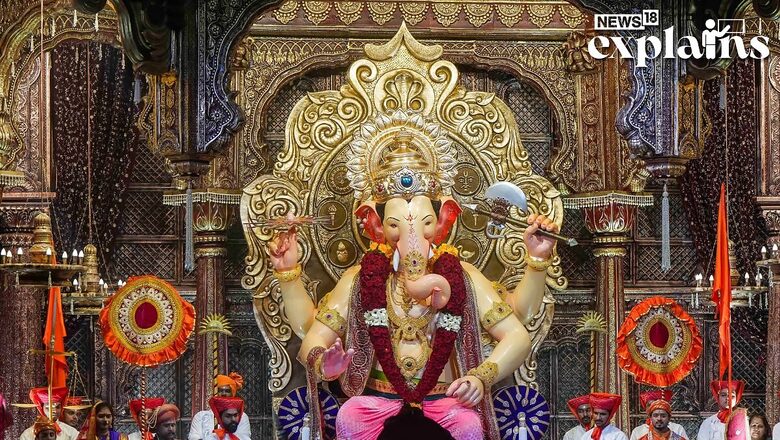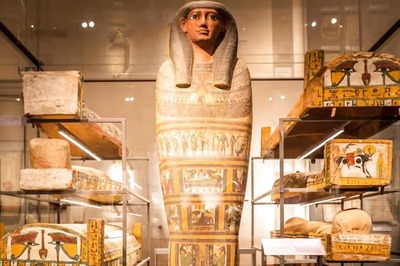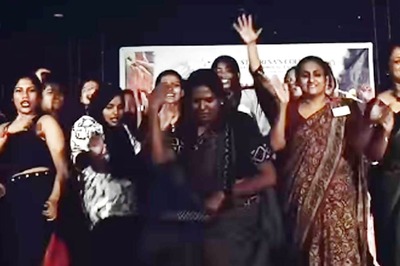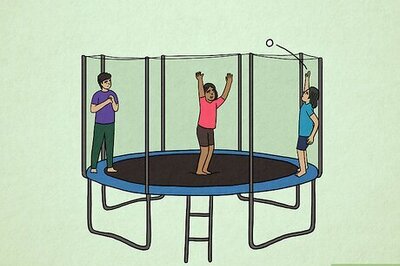
views
With Ganesh Chaturthi just around the corner, Indians are all set to welcome Lord Ganesha, also known as Vinayaka or Ganapati, into their homes. The festival celebrates the birth of Lord Ganesha, who is widely known as the remover of obstacles and giver of good fortune, success and wisdom.
Lord Ganesha’s help to humans is thus, invaluable and Ganesh Chaturthi is one of the most widely celebrated festivals in the country. Its popularity has, in fact, seen exponential rise in the last three decades.
The Flavour of the Festival
The popularity of Ganesh Chaturthi also stems from the fact that it is a time for social and community gatherings, decoration, and gaiety, all of which lend it a celebratory flavour. The ‘Sarvajanik Ganeshotsav’ – or public celebrations of Ganesh Chaturthi in pandals – were started in 1893 by Lokmanya Tilak and other revolutionaries. The 10-day period has continued to be seen as a time for gatherings, celebrations, performances, processions, and extravaganza.
People worship Him with his favourite sweets, flowers, fruits and coconut. Others who are more inclined to rituals, conduct the 16-step Hindu pooja – Shodashopachar – every morning and evening throughout the ten days of the festival.
The southern part of India, especially Andhra and Telangana, celebrates it somewhat differently. They start with building a ‘Palavelli’ – a wooden grid placed above the idol – decorated with mango leaves and various fruits. It represents the universe, of which the central force is Lord Ganesha, the fruits represent stars and our Earth is represented by a `Wood apple’ (the Bel fruit).
Lord Ganesha is made to wear a dhoti and there are offerings of 21 kinds of leaves including the Durva grass, the thorny ‘Dhatura’ and a sacred knotted thread. If immersion in a river or lake is not possible, a symbolic immersion is performed in a large vessel within the home compound.
Significance of the Festival
Scriptures such as the Ganesh Purana, Mudgala Purana, and Matsya Purana mention a ‘Ganesha Chaturthi Navaratri,’ similar to the Devi Navratris. In Hyderabad, the name of the festival is, in fact, ‘Ganapathi Navratri Utsavam’.
Just like the nine days of Devi Navratri are meant for worship of nine forms of the Goddess, these nine days are for worship of Ganesha to keep away nine types of evils – anger, passion, attachment, greed, intoxication and passion, etc. This way, Ganesh Chaturthi becomes a kind of `diksha’.
When Tilak made the festival into a public event, one of the reasons was to unite people, foster patriotism and bridge social gaps. However, the main purpose was to rid Indians of tamasic tendencies in order that they work for the freedom of the country.
Lord Vinayaka: Vighna-harta and Vighna-karta
For those seeking material prosperity, Lord Ganesha is the remover of obstacles.
An interesting aspect is revealed by Yuvraj Krishan in his book ‘Ganesa: Unravelling an Enigma’, where he talks about the dual role of Ganesha: the Ganesha from the Puranas who is worshipped as Vighna-harta; and the pre-Pauranic Vinayaka, who was supposed to be a Vighna-karta.
Renowned spiritual leader and Vedic scholar Dr Satguru Sivananda Murty has similarly said that Ganesha is not just ‘Vighna Nashaka’, but also ‘Vighna-Karaka’. Therefore, he is not only the destroyer of obstacles but also the cause of obstacles. ”The failures which come on our paths are the right obstacles. Lord Ganesha gives us the understanding to see failures in the right spirit. So, we pray to Ganesha as Vigna Karaka to save us from our unworthy attempts,” he has said.
Thus, Lord Ganesha has a much larger purpose. Much before the Puranas, Ganesha has found reference as far back as the Rigveda.
The Ribhu Gita talks of Vinayaka as ‘the dispeller of all impediments to freedom’. Freedom here refers to ‘mukti’, giving Lord Ganesha a different meaning as the ‘remover of obstacles.’
Swami Sivananda from Divine Life Society, Rishikesh refers to Lord Ganesha as ‘the leader of obstacles’ for the spiritual aspirant. “He is the Lord who removes all obstacles on the path of the spiritual aspirant and bestows upon them worldly and spiritual success. Hence, he is called Vighna Nayaka or the leader of obstacles,” he said.
Begin everything and end everything with Him
‘Om’ or Pranava is the Supreme Godhead whose presence is needed whenever we start anything new. Ganesha represents Om and therefore, He is invoked at the start of any prayer, venture or ceremony.
According to Dr David Frawley, founder of the American Institute of Vedic Studies, Ganesha after his head was replaced with the head of an elephant, gains access to a higher knowledge. Thus, he functions as the great guru and the giver of wisdom through Shiva’s power within Him. Ganesha can teach that infinite truth to us.
“But for this to occur, we must worship Ganesha in order to become Ganesha – which is to let go of our outer minds and embrace the unknown higher knowledge,” Dr David Frawley has said.
The final mantra is this: Everyone is supposed to perform this pooja, according to Dr Sivananda Murty. Those of us who cannot say mantras can simply invoke his presence through the word `Gam’. His essence is in the word ‘Gam’, according to Upanishads, and He is present there the moment you say it.
“This way, you keep Him with you all through the year, and can take advantage of His presence. Think of His form and say `Gam’ whenever you start something – any journey, any activity, sending children to school, even daily cooking. Utter the word, think of his form, and He is there immediately and takes care of everything for you,” Dr Sivananda Murty has added.




















Comments
0 comment